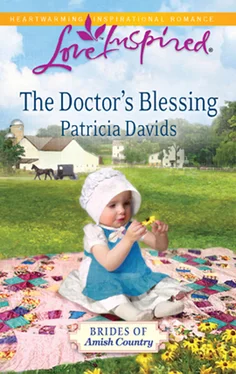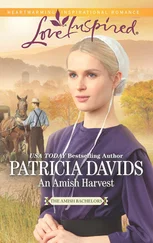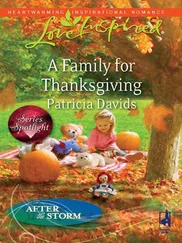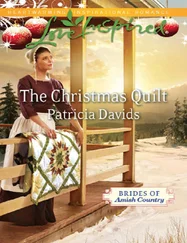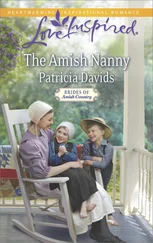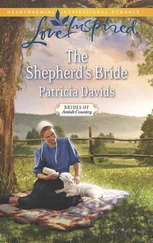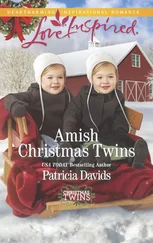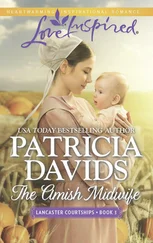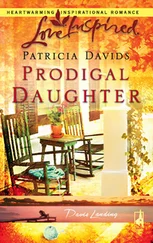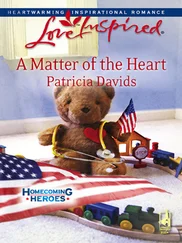“Sitting down feels good, doesn’t it?” Phillip asked.
She nodded. “You can say that again.”
“Is the clinic normally this busy?”
“We serve a large rural area besides the town. Today was busier than usual but not by much.”
He took a big bite of his sandwich. “This is good,” he mumbled with his mouth full.
“I picked it up at the café this morning.”
“Okay, I have to know. Why is it called the Shoofly Pie Café?”
“You’ve never heard of shoofly pie?”
“No.”
“Wait here.” Rising, Amber returned to the break room and pulled a small box from the bottom shelf. Returning to Phillip’s office, she set it in front of him with a pair of plastic forks.
He popped the last bite of sandwich into his mouth and cautiously raised the lid of the box. Swallowing, he said, “It looks like a wedge of coffee cake.”
“It’s similar. No dessert in the world says ‘Amish’ like shoofly pie. It’s made with molasses, which some people say gave it the name because they had to shoo the flies away from it. It’s a traditional Pennsylvania Dutch recipe but it’s served in many places across the South.”
“Interesting.”
“Try some.” She pushed it closer.
He shook his head.
“Are you a culinary chicken, Dr. Phillip?”
“It must be loaded with calories. I don’t indulge in risky behaviors.”
“That from a man who surfs the North Shore of Oahu?”
His eyes brightened. “You follow surfing?”
“A little.” And only since Harold told her it was his grandson’s favorite sport.
Phillip sat back and closed his eyes. “The North Shore is perfection. You should see the waves that come in there. Towering blue-green walls of water curling over and crashing with such a roar. The sandy shore is a pale strip between the blue sea and lush tropical palms. It’s like no place else on earth.”
“I’d like to see the ocean someday,” she said wistfully.
His eyes shot open in disbelief. “You’ve never been to the seashore?”
“I once saw Lake Erie.”
“Sorry, that doesn’t count. What makes you stick so close to these cornfields?” He picked up the fork and tried a sample of pie.
“I was born and raised in Ohio.”
“That’s no excuse.” He pointed to the box with his fork. “This is good stuff.”
“Told you. I was raised on a farm in an Amish community about fifty miles from here. My mother grew up Amish but didn’t join the church because she fell in love with my father, who wasn’t Amish. They owned a dairy farm. That means work three hundred sixty-five days a year. I don’t think I traveled more than thirty miles from our farm until I was in college.”
“What made you go into midwifery?”
“I always wanted to be a nurse. I liked the idea of helping sick people. Becoming a CNM wasn’t my first choice. I was led to become a nurse-midwife by my older sister, Esther. You would have liked her.”
Thoughts of Esther, always laughing, always smiling, brought a catch to Amber’s voice. He noticed.
“Did something happen to her?” he asked gently.
“Unlike mother, Esther longed to join the Amish church. She did when she was eighteen. After that, she married the farmer who lived across the road from us.”
“Sounds like you had a close-knit family.”
“Yes, we did. Esther had her first child at home with an Amish midwife. Everything was fine. Things went terribly wrong with her second baby. The midwife hesitated getting Esther to a hospital for fear of repercussions. By the time they did get help, it was too late. Esther and her baby died.”
“I don’t understand. How would that make you want to become a midwife?”
“Because a CNM has the skills, training and equipment to deal with emergencies. There are a lot of good lay midwives out there, but as a CNM I don’t have to be afraid to take a patient to the hospital for fear of being arrested for practicing medicine without a license. I can save the lives of women like my sister who want to give birth at home because they truly believe it is the way God intended.”
“Had your sister been in the hospital to start with, things might have turned out differently.”
He didn’t get it. She shouldn’t have expected him to. “Maybe, or maybe God allowed Esther to show me my true vocation among her people.”
Amber helped herself to the small bite of pie he’d left. “My turn to ask a question.”
“Why won’t I allow you to do home deliveries? I don’t believe it’s safe.”
She leaned forward earnestly. “But it is. Home births with a qualified attendant are safe for healthy, low-risk women. Countries where there are large numbers of home births have fewer complications and fewer deaths than here in the United States. How do you explain that if home births aren’t safe?”
“The American College of Obstetricians and Gynecologists do not support programs that advocate home birth. They don’t support individuals who provide home births.”
“Is that for safety reasons or financial ones? I’m taking money out of their pockets if my patients deliver at home.”
“You think the majority of doctors in the ACOG put money before the safety of patients? I doubt it. We could argue this point until we’re both blue in the face. I’m not changing my mind.”
Frustrated, Amber threw up her hands and shook her head. “This isn’t a whim or a craze. This has been their way of life for hundreds of years. At least listen to some of the Amish women who want home births. Hear their side of the story. This is important to them.”
All trace of humor vanished from his face. “What part of no don’t you understand, Miss Bradley?”
They glared at each other, the tension thick enough to cut with a knife.
Suddenly, Amber heard the front door of the clinic open. A boy’s voice yelled, “Doktor, doktor, komm shnell!”
She leapt to her feet. “He says come quick.”
Phillip jumped to his feet and followed Amber out to the office lobby. An Amish boy of about eight began talking rapidly. Phillip couldn’t understand a word. He looked at Amber. “What’s he saying?”
She shushed him with one hand until the boy was done. Then she said, “Their wagon tipped over in a ditch. His mother is trapped.”
“Did he call 9-1-1?”
She gave him a look of pure exasperation. “How many times do I have to tell you? They don’t have phones.”
Running back to his office, Phillip grabbed his grandfather’s black bag from a shelf beside the door. Returning to the lobby, he saw Amber had a large canvas bag slung over her shoulder.
He said, “I’ll get the car. Try to find out from him how badly she’s hurt and where they’re located so we can get EMS on the way.”
Taking the boy by the hand, Amber followed Phillip out the door and climbed into his black SUV. She said, “It’s Martha Nissley, the woman we treated today. They overturned near their farm. It’s a quarter of a mile from the edge of town. Should I drive?”
“You navigate and try to keep the boy calm. Is he hurt?”
She spoke briefly to the boy in Pennsylvania Dutch. He shook his head. To Phillip, she said, “I don’t think so. He’s just out of breath from running and from fright. Turn left up ahead and then take the right fork in the road.”
Phillip did as instructed. He wanted to hurry but he knew he had to drive safely. He’d heard horror stories from his grandfather about buggy and automobile collisions on the narrow, hilly roads.
“There, that’s the lane.” Amber pointed it out to him as she was dialing 9-1-1 on her cell phone.
Topping a rise, Phillip saw a group of four men freeing the horses from the wagon. Both animals were limping badly. The wagon lay on its side in a shallow ditch. Phillip pulled to a stop a few yards away.
Читать дальше
